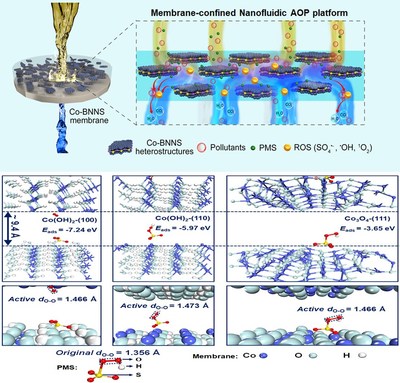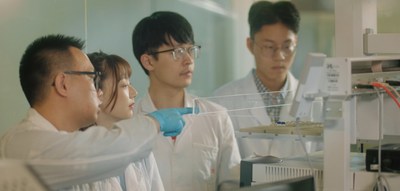
SHENZHEN, China, April 13, 2022 /PRNewswire/ -- Prof. Zhenghua Zhang's team at the Institute of Environment and Ecology, Tsinghua Shenzhen International Graduate School (SIGS), has developed a compact platform by combining a membrane separation process and advanced oxidation process in a single step for nanoconfined heterogenous catalysis of persistent organic pollutants to produce clean water. The in-situ functionalisation strategy presented by their team is convenient and allows nucleation of nanocatalysts within the water transport nanochannels of boron nitride membrane, opening a promising avenue for the construction of catalytic membranes. Prof.Zhang's research article, "Ultrahigh permeance functionalised boron nitride membrane for nanoconfined heterogeneous catalysis", has been published in Chem Catalysis on 3rd of Feb, 2022 (https://doi.org/10.1016/j.checat.2022.01.003).


Water pollution is mainly caused by anthropogenic activities and could disrupt the smooth functioning of economic activities and human health. In this context, detection of persistent organic pollutants such as pharmaceutical and pesticides in freshwater bodies is alarming due to their well-documented harmful impacts on human health (e.g., genetic malformations) after prolonged exposure. Due to these severe consequences, clean water (SDG6) and good health (SDG3) are included in the UN sustainable development goals. Here, Prof. Zhang's team introduced a simple concept of functionalising the boron nitride nanosheet (BNNS) membrane, involving nucleation of cobalt nanocatalysts within the membrane intralayer network of water transport nanochannels. Membrane-confined crystalline reactive species with multiple exposed active sites spontaneously activate peroxymonosulfate, producing ROS for ultrafast (~80 ms) destruction of organic pollutants at a fast flow-rate of 548 L m-2 h-1. Co-BNNS membrane showed good stability and outperformed previously developed membrane-confined catalysis systems (up to 26-fold higher permeance). Co-BNNS membrane enabled ultrafast destruction of several organic pollutants, offering an attractive alternative for membrane-based catalysis applications.
About:
The Institute of Environment and Ecology (iEE) is a vital part of Tsinghua's environmental science discipline. Oriented to the core needs of high-quality development and based on the forefront of international disciplines, the institute is committed to studying the theory of ecological and environmental protection, investigating key technologies, cultivating high-level personnel with global competence, and providing science and technology talent support for ecological civilization and community building with a shared future for mankind. iEE offers 5 Master's Programs and 2 Doctoral Programs to international students.
Admission 2022 is still open.
https://www.sigs.tsinghua.edu.cn/en/2021/1014/c1402a30068/page.htm
Contact:Institute of Environment and Ecology86-755-26418632admissions.iee@sz.tsinghua.edu.cn
Photo - https://mma.prnewswire.com/media/1796145/A_conceptual_illustration_2D_Co_BNNS_membrane_confined_nanofluidic_platform_heterogenous_catalysis.jpgPhoto - https://mma.prnewswire.com/media/1796146/The_Institute_Environment_Ecology.jpg
